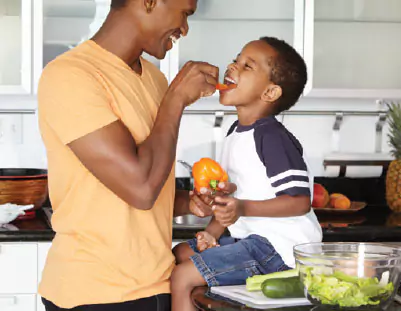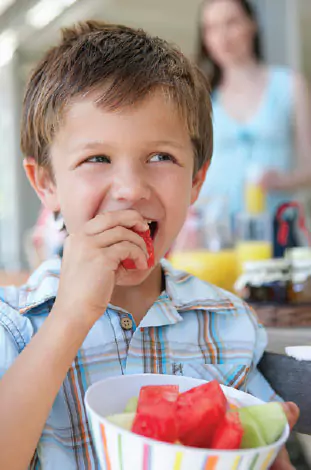Parents: Creating a Legacy of Healthy Habits
Parents have many important responsibilities when it comes to their kids, not the least of which is striving for their good health and nutrition. But this responsibility is so much more than just putting food on the table and knowing when to take kids to a doctor.
Parents need to not only feed their children, but teach them to eat right. Parents need to not only encourage their kids to be active, they need to show them. No form of teaching between a parent and child is more powerful than example.
To put it simply, the healthy habits of a parent will lay a foundation for healthy habits in their kids. But the contrary is also true—your children will pick up on and follow your less-than-healthy habits and choices.
Parents need to teach their children healthy habits in two main areas: diet and activity level.
Raising a kid to eat healthy
This is always a tough one—after all, kids are notoriously picky eaters and family life can be very busy. But don’t let that stop you from helping them develop healthy eating habits. Persistence will pay off, and kids’ tastes and eating habits do evolve as they mature.
Most kids in the U.S. don’t even come close to eating the recommended servings of fruits, vegetables, and whole grains—and they eat more than the recommended maximum level of sodium. In fact, their diets are often loaded with empty calories from sugars and fats.
For children between the ages of 12 and 18, nearly 40% of their daily calories come from fat and sugar, especially from soda and fruit drinks, desserts, pizza, and high-fat whole milk. This affects their health in the short term, but can also set them up for a lifetime of poor eating habits and health complications.
Where to start with nutrition
Parents following a few simple principles can make a world of difference for their children’s future eating habits. The following are great tips for both parents and kids.
• Eat more fruits and vegetables—half of each meal according to the USDA’s MyPlate guidelines
• Replace refined grains with whole grains—at least half of your daily grain intake
• Dairy is important for you, but opt for lower-fat milk, yogurt, and cheese
• Eat leaner proteins, and don’t forget beans, nuts, and seeds
• Portion sizes—don’t eat more than you need
• Limit desserts and treats
• Involve kids in the kitchen—they’ll learn healthy habits as they help
• Increase fiber intake—up to 30 grams daily
• Supplement daily to fill the gaps—focus on vitamins, minerals, and omega-3s like those you’ll fine in Koala Pals™ Shakeables™, Vitality omega-3s, and the Vitality Pack® powered by Oligo®
Getting the family more active
According to LetsMove.gov, kids age 8 to 18 spend an average of 7.5 hours a day with entertainment media and electronics! At the same time, the U.S. Department of Health and Human Services (HHS) recommends that “children and adolescents should do 60 minutes or more of physical activity daily.” Which do you think kids make a higher priority?
The Centers for Disease Control states that regular activity for kids “improves strength and endurance, helps build healthy bones and muscles, helps control weight, reduces anxiety and stress, increases self-esteem,” and may improve kids’ academic performance.
Research has shown that kids develop attitudes and behaviors about physical activity based on their home and family. So make exercise a family affair! An active parent is more likely to have active children. The fact is, getting active doesn’t have to feel like exercise at all. And don’t forget, calories burned during “play” are just the same as calories burned during “exercise.”
Where to start with exercise
School PE, organized sports, and dance groups are great exercise—but usually not enough. There are hundreds of great ways for kids—and parents—to get active. Let your children see you make exercise a priority by seeing you work out on a regular basis. Consistency is important—find ways to be active for 45–60 minutes every day. The following ideas can help you get started:
• Play basketball, soccer, tennis, or other sports together
• Go on a bike ride
• Walk or ride your bike instead of driving somewhere
• Go roller skating
• Do garden and yard work
• Walk the dog
• Turn on some music and dance
• Take the stairs instead of escalators and elevators
• Limit time spent on TV, computers, and gaming
• Go on a hike
• Go on a family walk before or after a meal
• Wash the car
• Go swimming
• Throw a Frisbee®
• Find activities that fit your family’s unique personality


